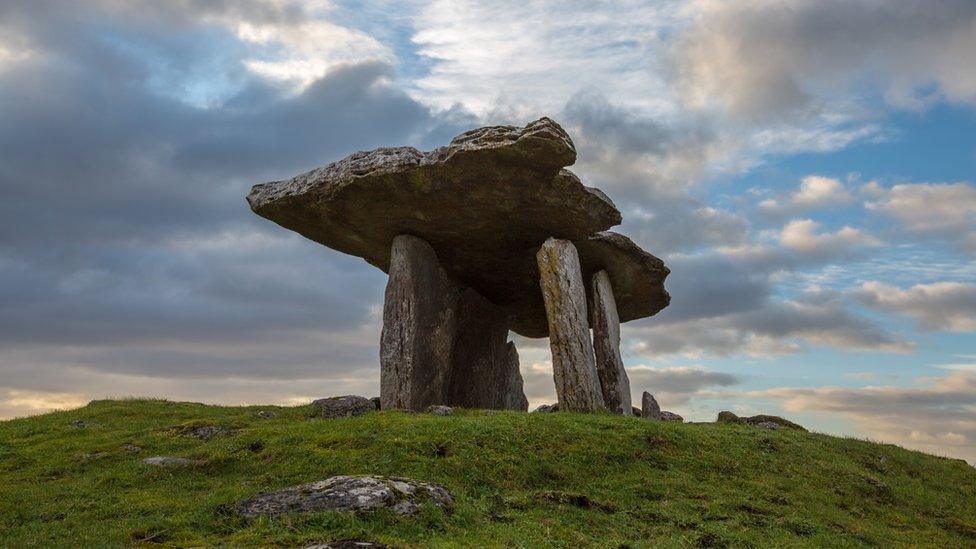Irish DNA map reveals history's imprint
- Published

The genetic landscape of Ireland had been laid down by the Bronze Age, but it continued to be subtly influenced by later events
Scientists have unveiled a detailed genetic map of Ireland, revealing subtle DNA differences that may reflect historic events.
In their sample of the Irish population, the researchers identified 10 genetic groupings - clusters - that roughly mirror ancient boundaries.
The results also suggest the Vikings had a greater impact on the Irish gene pool than previously supposed.
The findings are published in the journal Scientific Reports, external.
A team of Irish, British and American researchers analysed data from 194 Irish individuals with four generations of ancestry tied to specific regions on the island.
This allowed the scientists to work out the population structure that existed prior to the increased movement of people in recent decades.
Co-author Dr Gianpiero Cavalleri, from the Royal College of Surgeons in Ireland, told BBC News that the differences between the different Irish groups were "really subtle".
He told BBC News: "We're only picking them up now because, first of all, the data sets are getting really big." The other reason, he said, was because of "really clever analytical approaches to pick out these very slight differences that generate the clusters".

Distinct genetic clusters in Ireland are identified by different-coloured symbols. A similar map for Britain - produced for an earlier study - is also shown
The study builds on a similar one for Britain, which was published in 2015.
Recent studies of DNA from ancient remains suggest that, broadly-speaking, the Irish genetic landscape was established by the Bronze Age, when migrants from mainland Europe - probably belonging to the Beaker archaeological culture - had settled on the island.
It's possible that these Bronze Age people also spoke Celtic languages, though we cannot know this for sure.
The latest paper highlights more recent population-shaping events in Irish history. The locations of the 10 clusters identified in the Irish population seemed to reflect either the borders of the four Irish provinces - Ulster, Leinster, Munster and Connacht - or historical kingdoms.
For example, the researchers found that Munster divided into northern and southern genetic clusters. These appear to coincide with the boundaries of the Dál Cais and the Eóganacht - rival kingdoms established in medieval times.
But it might also be influenced by geography - specifically the mountains which carve up the landscape in this region.
"The likelihood is that it's a combination of these things - a little bit of geography combined with wars or rivalry generates kinship in each distinct area. And it's those subtle features that we're able to extract today," said Dr Cavalleri.
Of the 10 clusters, seven were found to be of "Gaelic" Irish origin and three of mixed Irish and British ancestry. All of the mixed clusters were located in Northern Ireland.
The geographical location of these three groupings, along with estimates of when the population mixing occurred - the 17th to 18th Centuries - led the researchers to surmise that this was related to the Ulster Plantation, when English and Scottish Protestants settled in Ireland.
The detection of Norwegian-like ancestry in Irish samples probably reflects migrations during the Viking era. While this component is relatively small (a maximum of 20%) compared to the native Irish background, the researchers were surprised to find it at higher levels in the Irish than in the Welsh and English (though at lower levels than those found in the Orkneys, with their traditional ties to Scandinavia).
However, Dr Cavalleri said it was possible the high levels of Norwegian ancestry in the Irish might be confounded if substantial amounts of Irish DNA had found its way to Norway over time: "Perhaps people the Vikings brought back," he speculated.
This could have the effect of reducing genetic differences between the two populations and making it seem as if the amount of Viking ancestry in Ireland is greater than it is.
Follow Paul on Twitter., external